Solar panels have become a popular choice for homeowners looking to save money, reduce energy use, and create a more sustainable lifestyle. Understanding what solar panels are made of helps you know how they work, how long they last, and why they are such an effective renewable energy option. This is especially helpful for anyone considering solar power for a cabin or tiny home, where energy efficiency and independence matter the most.
At Ohio Cabin and Structures, many customers ask whether solar panels pair well with small cabins, off-grid sheds, and tiny homes. The answer is yes. Solar power is an excellent match for compact living spaces because it can reduce utility costs and provide reliable energy even in remote areas. Before choosing a system, it’s important to understand what solar panels are made of and why each layer matters.

Understanding the Basic Structure of Solar Panels
Solar panels use several layers that each perform a specific job while turning sunlight into electricity. The design includes photovoltaic cells, protective glass, a metal frame, wiring, and a backsheet. Every component adds strength and improves performance. Solar panels look simple from the outside, but inside they rely on advanced materials that capture and convert sunlight with high efficiency.
Most modern solar panels use photovoltaic cells made from silicon. Manufacturers choose silicon because it is abundant and converts sunlight into energy extremely well. The cells sit in a grid pattern, and tempered glass shields them from wind, rain, snow, and debris so they can keep producing power in all kinds of weather.
Photovoltaic Cells: The Heart of the Panel
The photovoltaic cell produces electricity inside a solar panel. Manufacturers create these cells from silicon because it functions as a strong semiconductor. When sunlight strikes the silicon, it pushes electrons free and generates an electric current. This reaction creates what builders call the photovoltaic effect.
Most solar panels use monocrystalline or polycrystalline silicon. Manufacturers form monocrystalline cells from a single, pure silicon crystal, which gives them higher efficiency and a longer lifespan. These qualities make them a smart option for cabins or tiny homes that have limited roof space. Polycrystalline cells come from multiple pieces of silicon melted together. They lower the cost of the panel, although they produce slightly less energy.
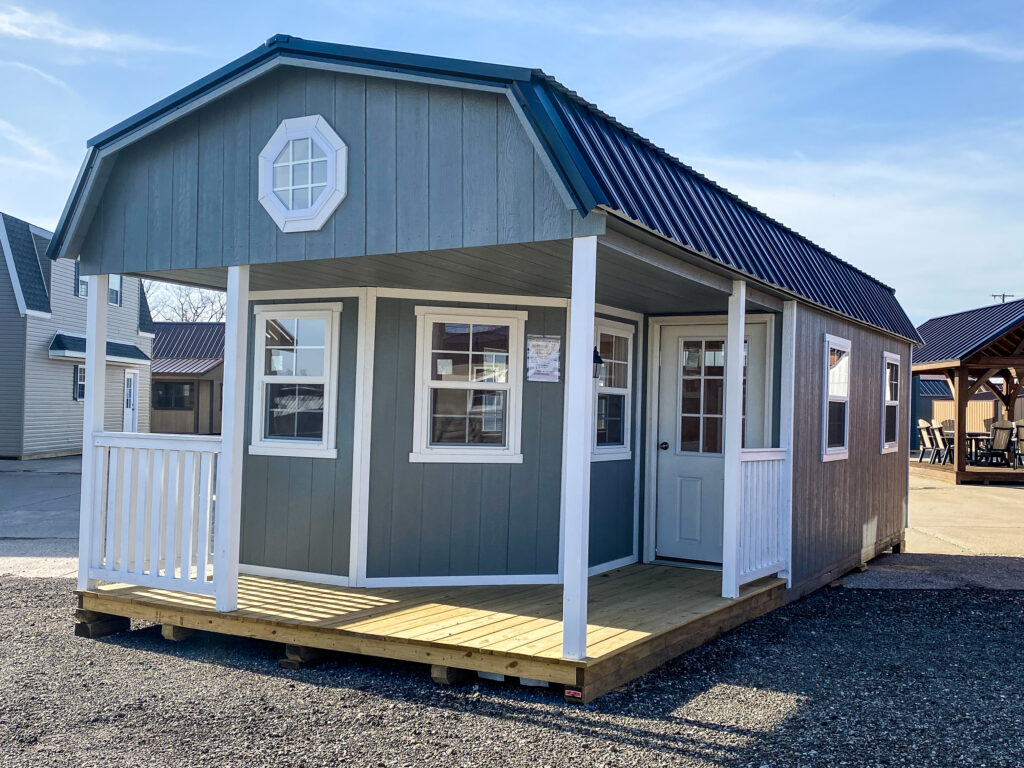
The Role of Silicon in Solar Panels
Silicon is used because of its ability to absorb sunlight and convert it into usable energy. It is strong, long lasting, and widely available. These qualities make silicon the dominant material in the solar industry. To learn more about silicon and how it works, you can read Wikipedia’s overview of silicon, which provides detailed information about its structure and use in electronics.
Silicon cells are very thin, often only a few millimeters thick, yet they are powerful enough to generate energy even on cloudy days. This makes them ideal for off-grid cabins or tiny homes that rely on consistent and predictable power.
Protective Glass Layer
The top layer of a solar panel is made of tempered glass. This special glass is extremely durable, resistant to impacts, and designed to protect the delicate photovoltaic cells. It allows light to pass through while keeping the internal components safe from harsh weather conditions.
Tempered glass also protects the panel from UV radiation, moisture, and debris. It is a key reason why solar panels last 25 to 40 years with minimal maintenance. For homeowners looking to power a cabin or tiny home long-term, this durability makes solar a reliable investment.
Encapsulant: The Protective Bond
Beneath the glass lies a layer called the encapsulant. This material is usually made from EVA (ethylene vinyl acetate), a flexible and transparent substance. It keeps the photovoltaic cells in place and protects them from vibration, moisture, and temperature changes.
The encapsulant plays an important role in long-term performance. It seals each cell securely and helps maintain a strong bond between the glass and the backsheet. Without this layer, the cells could shift or break down over time.
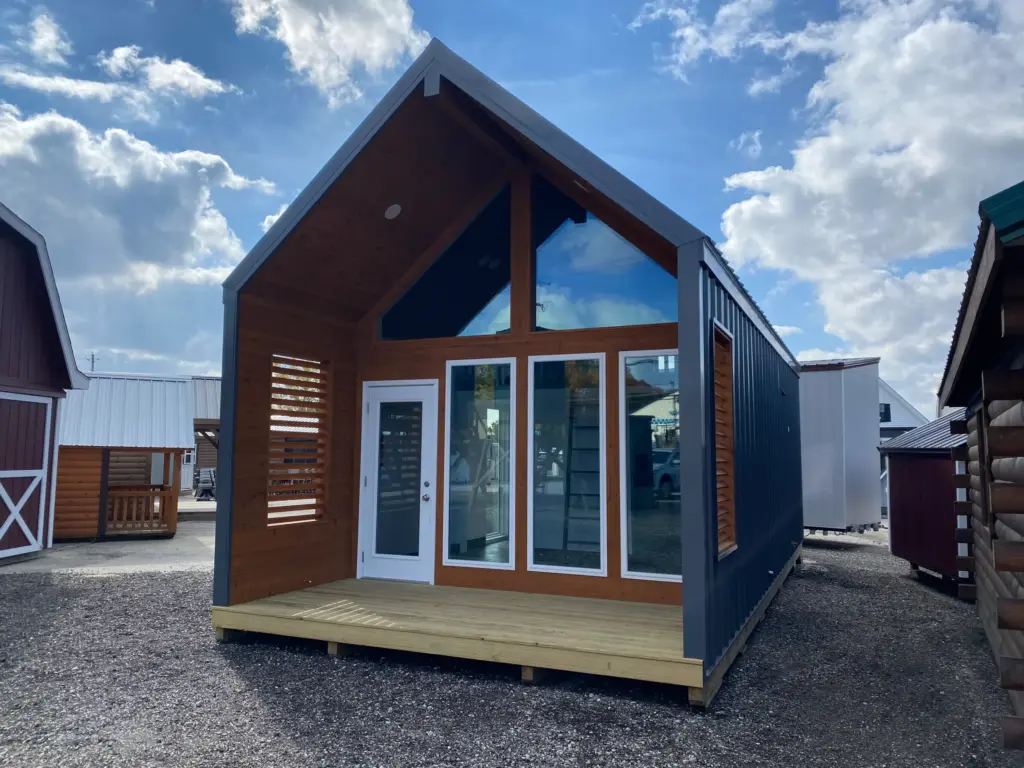
The Backsheet: Protection From the Rear
The backsheet is the bottom layer of the solar panel. It is usually made of a durable polymer material designed to protect the cells from moisture, heat, and physical damage. The backsheet also acts as an electrical insulator, keeping the system safe and efficient.
Most backsheets are white to reflect heat and keep the panel at a stable temperature. Cooler solar panels work more efficiently, which is helpful for cabins in sunny or warm environments.
The Metal Frame
Surrounding the panel is a metal frame, usually made of aluminum. This frame provides strength and stability. It allows the panel to be mounted on roofs, ground systems, or tilt racks. Aluminum is lightweight and rust-resistant, making it perfect for outdoor use.
For cabins or tiny homes, the frame is especially important because it allows flexible installation on pitched roofs, sheds, or even freestanding mounts next to a structure. A sturdy frame keeps the solar panels secure even in high winds or snowy winters.
Wiring and Junction Box
Inside and behind each solar panel is a network of wiring that carries electricity from the photovoltaic cells to the home’s electrical system. The wires are connected to a junction box mounted on the back of the panel. This box helps regulate and direct the electricity safely.
Quality wiring improves performance and reduces energy loss. For off-grid tiny homes or cabins, dependable wiring ensures consistent power for lights, appliances, and heating systems.

How These Materials Work Together
Each material in a solar panel has a specific job, but they all work together to capture sunlight and turn it into electricity. The glass protects the cells. The encapsulant holds everything in place. The silicon cells convert light into energy. The backsheet protects the system from behind. The frame provides structure. Combined, these materials create a panel that is strong, efficient, and long lasting.
For tiny homes and cabins, this combination is ideal. Solar panels allow homeowners to generate power even in remote areas without relying on traditional utility lines. This reduces monthly costs and creates a sense of independence that aligns well with small home living.
How Solar Panels Benefit Cabins and Tiny Homes
Solar power fits perfectly with the lifestyle of cabin owners and tiny home builders. Small structures use less energy, which means fewer panels are needed to supply power. Installing solar panels helps cabin owners avoid high utility costs and allows tiny home residents to live more sustainably.
Solar panels also allow remote cabins to operate completely off-grid. This is valuable for homeowners who want to place their cabins deep in nature without worrying about running power lines. A properly sized solar system can power lights, refrigerators, small HVAC systems, and water pumps with ease.
Using Solar Panels With the 12×16 A-Frame Cabin
The 12×16 A-Frame Cabin offered by Ohio Cabin and Structures is an excellent example of a small building that can pairs well with solar power. Its compact size and efficient layout make it simple to power with a small solar array. The sloped roof also supports a good angle for mounting panels, improving energy capture throughout the year.
Many owners choose to add one to six solar panels depending on their power needs. A cabin of this size can easily run off a modest solar system, especially if energy-efficient appliances and LED lighting are used inside.
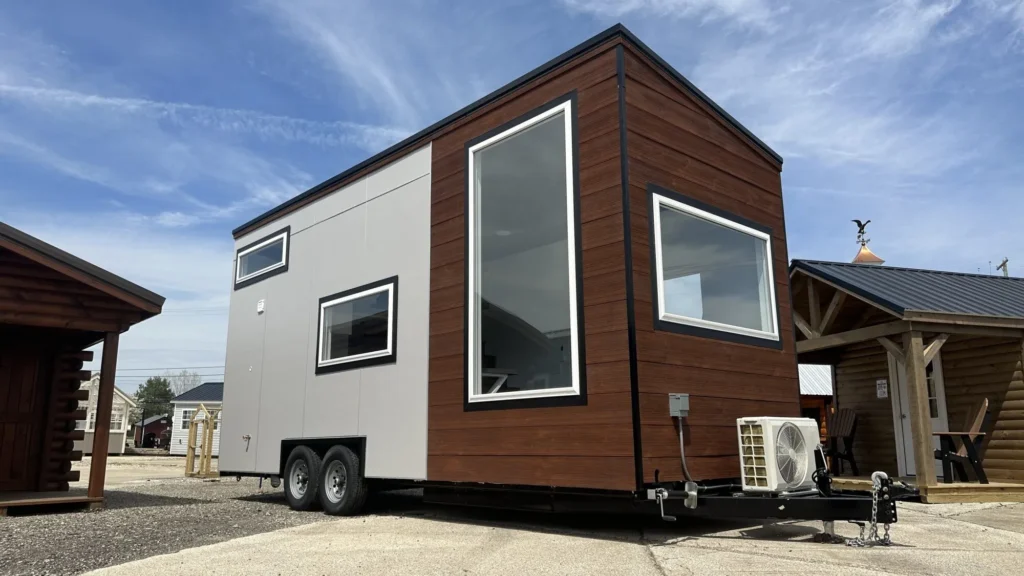
How Tiny Homes Reduce Energy Use
Tiny homes are naturally energy efficient due to their small footprint. They require less power for heating, cooling, and lighting. This makes them perfect candidates for solar energy. A small solar array can support the entire home, reducing reliance on local utilities and lowering monthly expenses.
Pairing solar power with a tiny home helps owners create a low-maintenance lifestyle that is both affordable and environmentally friendly. This combination supports sustainable living without compromising comfort or functionality.
Types of Solar Panels and Their Materials
There are three main types of solar panels used today. Each type is made of different materials and offers different benefits. Monocrystalline, polycrystalline, and thin-film panels are the most common. Choosing the right one depends on budget, available roof space, and energy goals. Cabin and tiny home owners usually select monocrystalline panels because of their high efficiency and long lifespan.
Monocrystalline panels are made from a single piece of silicon, which makes them more efficient at capturing sunlight. Polycrystalline panels are made from many pieces of silicon melted together, offering slightly lower efficiency at a more affordable price. Thin-film panels use layers of photovoltaic material applied to glass or metal. They work well in cloudy areas but require more surface space to generate the same power output as silicon panels.
Durability of Solar Panel Materials
One of the biggest advantages of solar panels is their durability. The tempered glass, aluminum frame, and protective layers are engineered to withstand snow, wind, rain, and hail. A well-made panel can survive harsh weather and continue producing power for decades. This reliability makes solar a smart investment for off-grid cabins or remote tiny home sites where maintenance access may be limited.
UV protection is also built into the panel materials. This prevents sunlight from breaking down the internal components over time. With proper care and cleaning a few times a year, a solar panel can easily last twenty five to forty years without losing significant efficiency.

How Solar Materials Affect Performance
The quality of the materials determines how well a panel performs. Panels made with high purity silicon produce more energy. Panels with stronger encapsulants and backsheets resist moisture better. Thicker frames hold up to wind and snow. These details matter when choosing solar for a cabin or tiny home in changing climate conditions.
Even small differences in material quality can affect daily energy production. For example, a monocrystalline panel captures more sunlight in low light conditions compared to a polycrystalline panel. This extra efficiency is helpful for tiny homes in wooded or shaded areas.
Installation Materials and Mounting Systems
Solar panels need a secure mounting system made of steel or aluminum. These mounts attach the panels to a roof or ground rack. For cabins and tiny homes, the roof structure must be strong enough to support the weight of the panels and racks. Many off grid cabins use ground mounted systems that can be adjusted for better sunlight exposure.
Proper installation materials prevent the panels from shifting or loosening during storms. The mounting hardware is just as important as the panels themselves because a secure foundation ensures long term performance and safety.
Wiring, Inverters, and Additional Components
Solar panels generate direct current electricity. Homes use alternating current. This means an inverter is required to convert the energy. Inverters are usually mounted inside the cabin or tiny home and connected to batteries if the system is off grid. Wiring materials made of copper or aluminum carry electricity from the panels to the inverter safely.
Battery banks are optional but recommended for cabins that need power at night or in bad weather. Lithium iron phosphate batteries are popular choices. They are lightweight, long lasting, and work well with renewable energy. Together, the panels, inverter, charge controller, and batteries form a complete power system.

Environmental Benefits of Solar Panel Materials
Solar panels do not produce pollution while generating electricity. Their materials are recyclable and environmentally friendly when compared to fossil fuel systems. Many manufacturers reuse or recycle silicon and aluminum. This reduces waste and promotes sustainable building practices. Cabin owners who want to lower their environmental impact often choose solar as part of their off grid lifestyle.
Solar companies can recycle the glass and polymer layers in solar panels at the end of their lifespan. This helps reduce landfill waste and supports the growth of renewable technology designed with long term environmental health in mind.
Cost of Solar Materials
The cost of solar panels depends on the quality of the materials and efficiency of the cells. Monocrystalline panels cost more but produce more energy. Polycrystalline panels cost less but require more roof space. Thin film panels are affordable but work best in specific climates. For cabins and tiny homes, monocrystalline panels often offer the best balance of cost and performance.
A full solar setup for a small cabin can range from three thousand to fifteen thousand dollars depending on power needs. The long lifespan and reduced utility bills make solar a worthwhile investment. Many homeowners recover their initial cost through savings in just a few years.
Solar Power for Off Grid Cabins
Solar energy is one of the easiest ways to power an off grid cabin. It works in remote areas and does not depend on access to power lines. Cabin owners often combine solar with propane stoves, high efficiency heaters, and LED lighting to reduce energy consumption. This combination allows comfortable living even far from urban utilities.
The 12×16 A Frame Cabin is a popular choice for solar systems. The roof angle supports good panel placement. The cabin size keeps energy needs low. With a small solar setup, owners can run lights, small appliances, water pumps, and even mini split heating units.
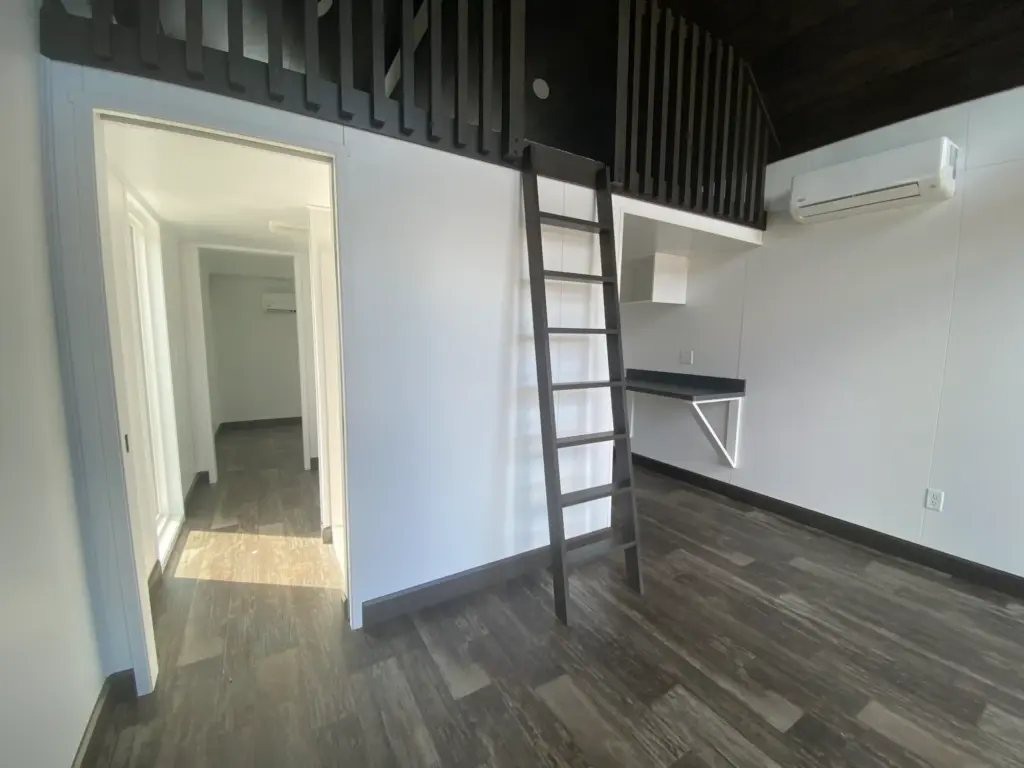
How Solar Panels Improve Tiny Home Living
Tiny homes use less energy than traditional houses because of their compact size. This makes solar power extremely practical. A small array of panels can supply all the electricity needed for daily living. Many tiny home owners place their homes in secluded or rural areas where solar energy provides reliable and free power.
Solar setups also reduce monthly living costs. With the rising cost of electricity, many people turn to tiny homes and solar power as a way to achieve financial freedom. This combination supports a simple lifestyle while providing essential comforts like refrigeration, heating, cooling, and lighting.
Why Solar Panels and Cabins Pair Well
Cabins are often built in natural settings where homeowners want to live quietly and sustainably. Solar panels match this lifestyle perfectly. They operate silently and require very little maintenance. They provide energy independence and reduce reliance on fossil fuels. For many cabin owners, solar power is a natural extension of their desire to live closer to nature.
At Ohio Cabin and Structures, we help cabin owners choose solar options that fit their building size, sun exposure, and lifestyle. Whether you want a fully off grid setup or a backup system for emergencies, solar energy is a reliable solution.
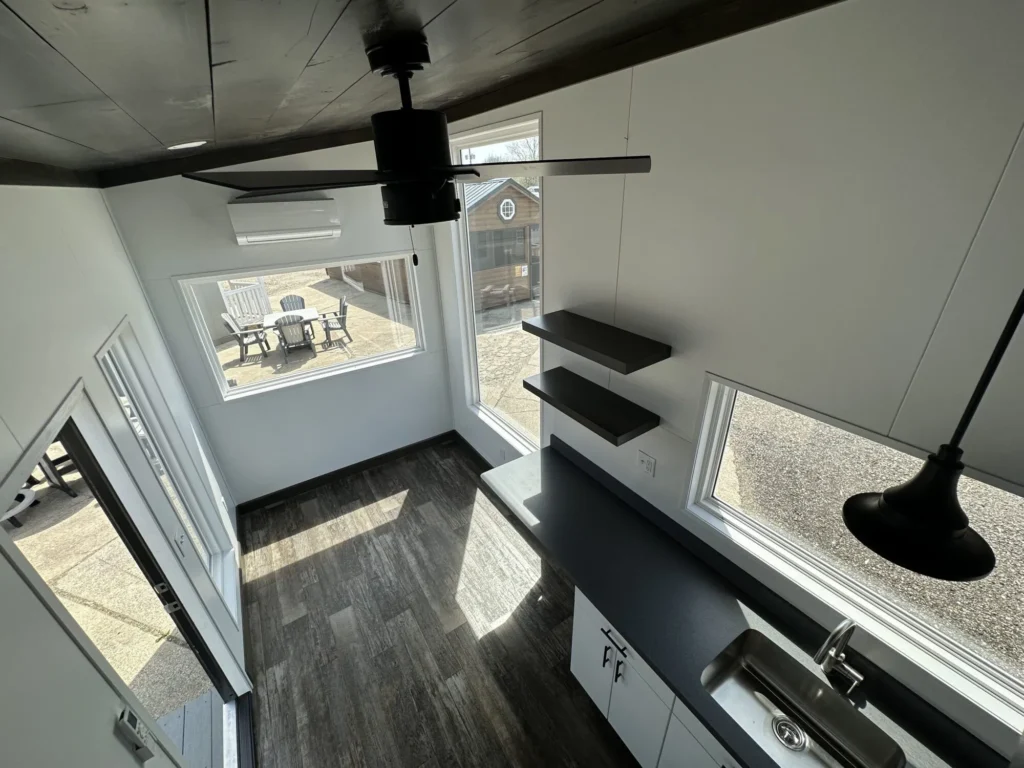
Final Thoughts
Solar panels are made of durable and efficient materials designed to withstand weather, absorb sunlight, and generate clean power. The silicon cells, tempered glass, aluminum frame, encapsulant layers, and protective backsheets all work together to create a long lasting energy source. These materials make solar panels ideal for cabins and tiny homes where energy efficiency and independence matter most.
By combining modern solar technology with the craftsmanship of Ohio Cabin and Structures, homeowners can enjoy a comfortable, sustainable, and off grid lifestyle. Solar power gives cabin owners flexibility, financial savings, and the freedom to build in remote or natural locations while staying fully powered year round.
